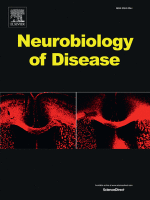Neurobiol Dis. 2023 Dec 24:191:106392. doi: 10.1016/j.nbd.2023.106392
Central role of the habenulo-interpeduncular system in the neurodevelopmental basis of susceptibility and resilience to anxiety in mice
Malalaniaina Rakotobe1, Niels Fjerdingstad1, Nuria Ruiz-Reig1, Thomas Lamonerie1, Fabien D’Autréaux1
Affiliations
1Université Côte d’Azur, INSERM, CNRS, iBV, Nice, France
Abstract
Having experienced stress during sensitive periods of brain development strongly influences how individuals cope with later stress. Some are prone to develop anxiety or depression, while others appear resilient. The as-yet-unknown mechanisms underlying these differences may lie in how genes and environmental stress interact to shape the circuits that control emotions. Here, we investigated the role of the habenulo-interpeduncular system (HIPS), a critical node in reward circuits, in early stress-induced anxiety in mice. We found that habenular and IPN components characterized by the expression of Otx2 are synaptically connected and particularly sensitive to chronic stress (CS) during the peripubertal period. Stress-induced peripubertal activation of this HIPS subcircuit elicits both HIPS hypersensitivity to later stress and susceptibility to develop anxiety. We also show that HIPS silencing through conditional Otx2 knockout counteracts these effects of stress. Together, these results demonstrate that a genetic factor, Otx2, and stress interact during the peripubertal period to shape the stress sensitivity of the HIPS, which is shown to be a key modulator of susceptibility or resilience to develop anxiety.
DOI: 10.1016/j.nbd.2023.106392

